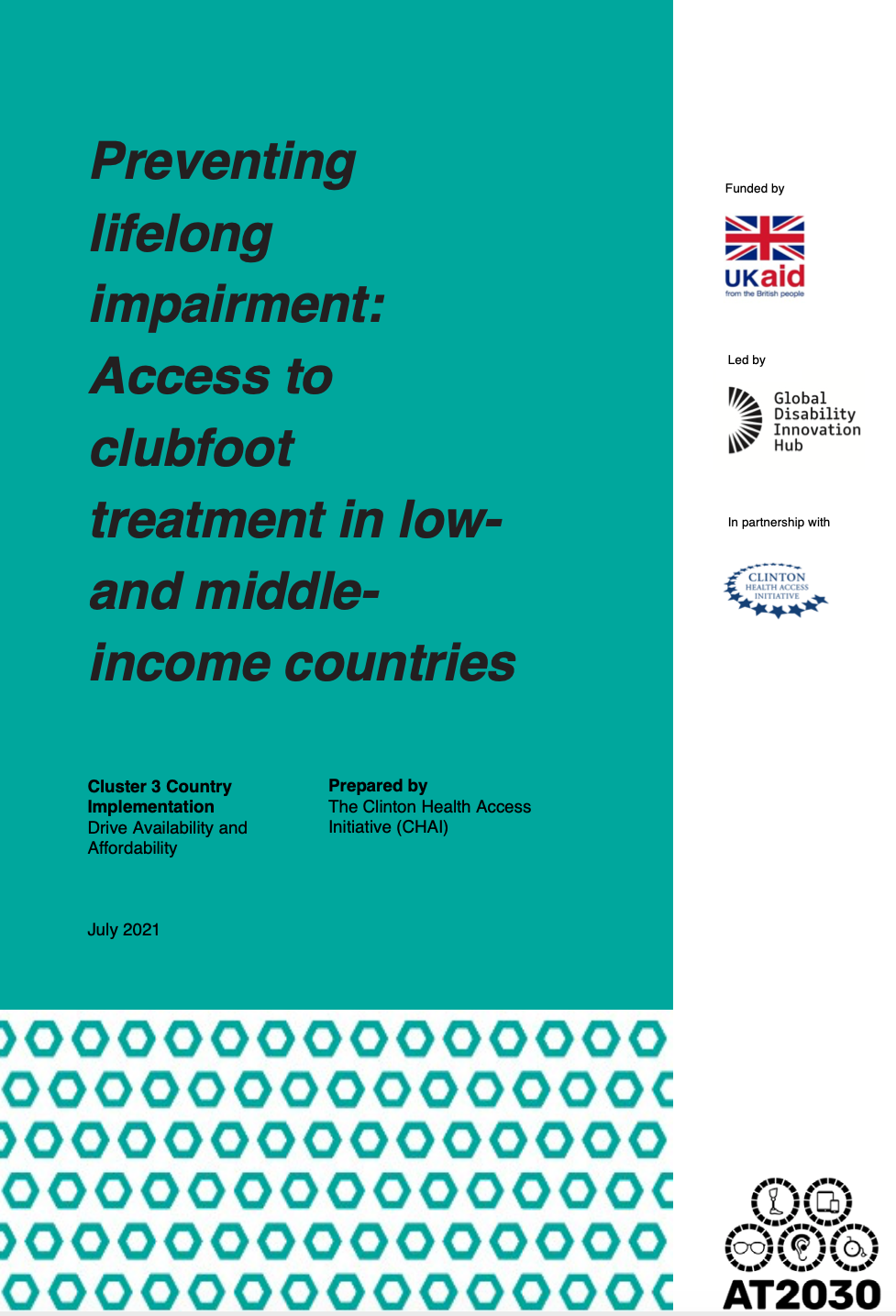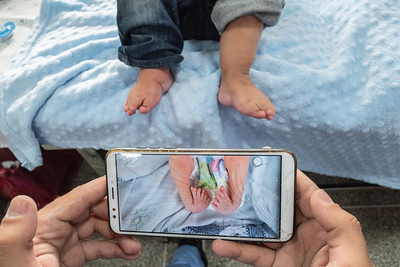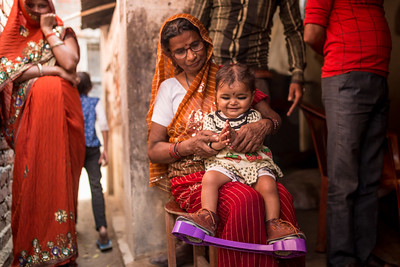Preventing lifelong impairment: Access to clubfoot treatment in low- and middle-income countries
Clinton Health Access Initiative
July 19, 2021
Global
Case Studies and Reports
To increase access to clubfoot services in LMICs, further investment is needed to achieve the vision of a world where thousands of children each year can receive treatment for an impairment and therefore avoid a life-long impairment. The following actions are recommended:
- Policy: Advocate to global and national actors - ministries of health and donors - for the integration and mainstreaming of clubfoot treatment as an essential neonatal and child health service.
- Provision: Develop global guidance and standards on the delivery of clubfoot services and products.
- Personnel: Integrate clubfoot treatment into government-led MNCH policies, plans and training curricula for health workers at the country level.
- Products: Ensure an adequate supply of all treatment materials – plaster, padding and tenotomy supplies and affordable, quality Foot Abduction Braces in LMICs.
- People: Test, validate, adopt, and scale new solutions and technologies that promote patient-centred care to improve adherence in low resources settings.


